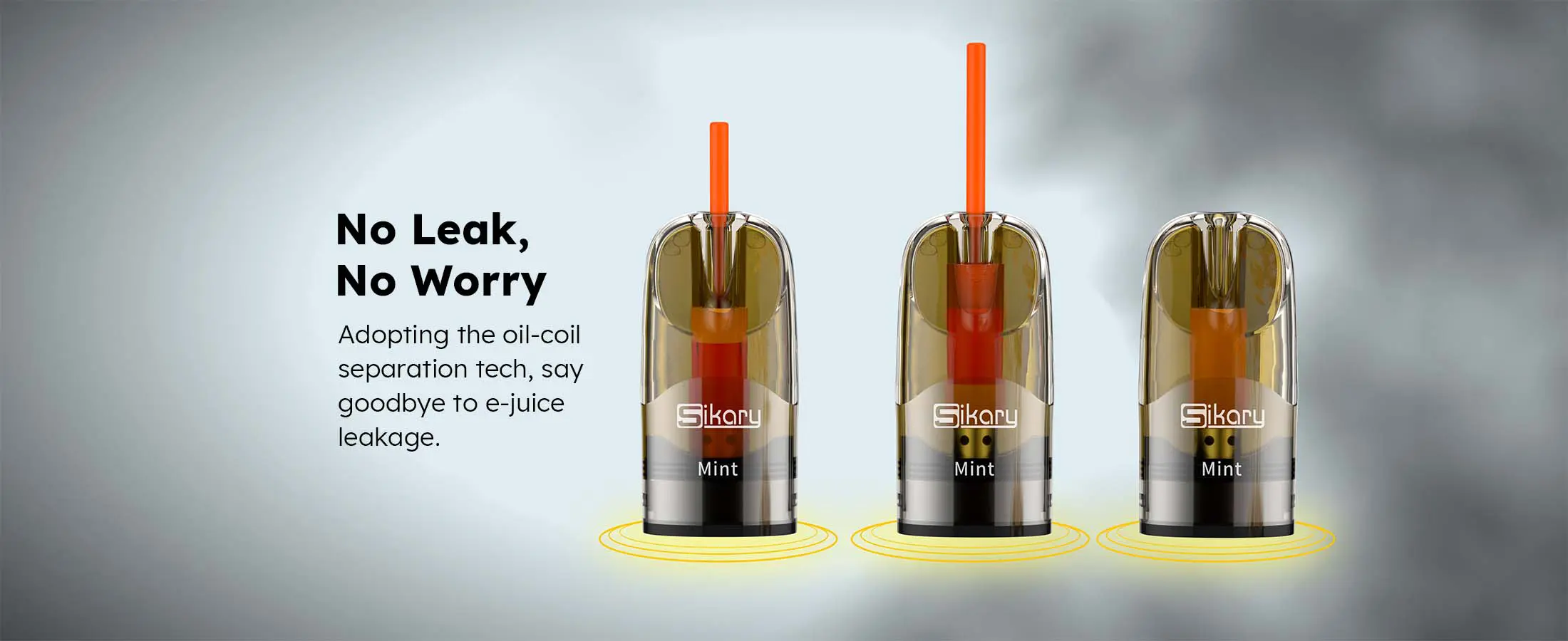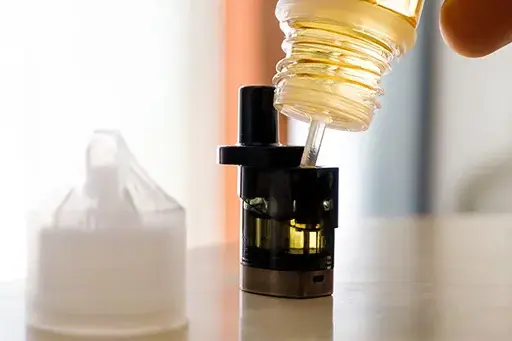Is It a Sin to Vape?
This is not a medical or legal question alone, but a moral and spiritual one. While no major religion explicitly mentions vaping, faith-based views often focus on health, intention, self-control, and harm to others.
Read More >>WARNING: THIS PRODUCT CONTAINS NICOTINE. NICOTINE IS AN ADDICTIVE CHEMICAL.
In the ever-evolving world of e-cigarettes, e-liquids and vaping trends, the choices are many. Pod kit or disposable? High VG or high PG vape liquid? DTL (direct to lung) or MTL (mouth to lung)? How you vape and the type of device you use to enjoy great taste, rich vapour and craving relief can quickly become a maze of options, often requiring a great deal of experimentation before you find the perfect set-up for your needs. For us vapers, this variety is one of the things we love about the hobby. Fortunately, however, some decisions are more binary and straightforward, such as 'which is best': Nic Salts vs. Freebase?
This relatively simple question asks which form of nicotine you prefer in your e-liquid, but understanding the difference between these two popular forms of nicotine - nic salts and freebase nicotine - is not only a matter of preference, but also key to enhancing your vaping experience. Your choice can affect everything from the throat hit to how quickly the nicotine is absorbed into your bloodstream? Here we take a closer look at both types of nicotine to help you make an informed choice and get the most out of your vaping experience.

Nicotine is a naturally occurring compound found in tobacco plants. Historically, this natural stimulant has been consumed in various forms, most famously in tobacco products such as cigarettes. But with the advent of vaping, nicotine has found a new home suspended in a liquid solution of food-grade ingredients such as vegetable glycerin (VG), propylene glycol (PG) and flavourings. Vape kits heat this 'e-liquid' to produce a vapour that is inhaled, giving the vaper a deliciously flavoured puff of smooth vapour to enjoy while the nicotine gently relieves any cravings.
In the early days of the vaping revolution, e-liquids used what we now call freebase nicotine, a form that's been around since the mid-20th century when tobacco companies discovered that by releasing nicotine from its natural state, they could increase its potency. This innovation laid the foundation for the nicotine used in the first generation of e-liquids. As vaping technology evolved, so did the types of nicotine used, leading to the development of nicotine salts, a game changer for many vapers seeking a different kind of experience.
Freebase nicotine has been a core ingredient in e-liquids since the beginning of vaping. This type of nicotine is created by adding ammonia to nicotine, which removes its protons and increases its bioavailability. This process makes Freebase nicotine more potent when heated and inhaled, providing the strong and satisfying throat hit that many vapers crave. Freebase nicotine e-liquids are typically available in strengths ranging from 3mg to 12mg and cater to those who prefer a more intense sensation and clearer flavour.
The throat hit from Freebase nicotine is more tactile and pronounced, especially at higher strengths, so it's great in e-liquid for vapers who enjoy a similar sensation to smoking. However, at higher nicotine strengths (18mg-24mg), e-liquids containing freebase can become almost unbearably harsh to vape.
Vape liquids containing freebase nicotine are compatible with the vast majority of vaping devices, including high-powered advanced vape kits and mods, which are generally incompatible with nicotine salt-based e-liquids.
Nicotine salts, commonly known as Nic Salts, are a relatively new form of nicotine in the vaping world, first appearing towards the end of the 2010s. They are created by adding benzoic acid to freebase nicotine, resulting in a compound that's closer to the natural, lower PH state of nicotine found in tobacco leaves. This process not only changes the chemical composition of nicotine, but also adds uniquely interesting vaping characteristics.
The unique chemical formulation of nicotine salts means that they are absorbed into the body faster than freebase nicotine, providing a quicker and more noticeable nicotine hit, similar to smoking a traditional cigarette. However, one of the biggest advantages of nicotine salts is the remarkably smoother throat hit they provide, even at the highest nicotine strengths, which is 20mg in countries such as the UK that comply with EU TPD regulations. This makes them a great choice for those who want a strong dose of nicotine, but without the harshness of freebase nicotine.
Nicotine salts offer the best nicotine for vaping with low-power, mouth-to-lung devices and are ideal for vapers who prefer discretion and portability. Their rise in popularity reflects the diverse needs of the vaping community, offering a more comfortable and potentially more satisfying nicotine experience, especially for those new to vaping or looking to quit smoking.
Understanding the difference between nic salts and freebase nicotine is important as each offers unique characteristics that can affect your vaping experience. Here’s a breakdown to help you understand which might be right for you:
| Freebase E-liquid | Nicotine Salts E-liquid |
|---|---|
| Pros: Wider range of flavour experiences. Wider choice of nicotine strengths for gradual reduction. Compatible with a broader range of vape devices. Cons: Stronger throat hit might be harsh for some vapers. Slightly slower nicotine absorption may not satisfy cravings quickly. Higher vapour production, less discreet. | Pros: Quicker satisfaction, similar to traditional smoking. Less irritation, smoother on the throat. Suitable for stealth vaping due to less vapour production. Cons: Limited flavour profile due to higher nicotine levels. Not suitable for cloud chasing or high-powered DTL devices. Potentially too intense for light smokers or beginners. |
| Choose Nicotine Salts E-liquids If You: | Choose Freebase Nicotine E-liquids If You: |
|---|---|
| Are a Heavy Smoker: You require fast absorption and a quick nicotine hit similar to smoking cigarettes. Prefer a Smoother Throat Hit: Sensitive to harsh throat hits and prefer a smoother sensation, even at higher nicotine strengths. Are a New Vaper or Recent Smoker: We often recommend nic salt e-liquids for beginners or those recently transitioned from smoking, looking for an experience closer to smoking. Use Low-Power Devices: Prefer using low-wattage, mouth-to-lung starter kit and pod kit devices, which are more compatible with nic salts. Seek Discretion in Vaping: Looking for less vapour production, ideal for discreet vaping in public spaces. Want Higher Nicotine Strengths: Require or prefer higher nicotine concentrations, up to 50mg, for a more satisfying experience. Enjoy Simpler or more Pronounced Flavours: Enjoy simpler or more robust flavour profiles, as nic salts can slightly mute complex flavour blends. | Prefer a Strong Throat Hit: Enjoy the sensation of a strong throat hit similar to traditional cigarettes. Are an Experienced Vaper: Familiar with various vaping devices and prefer customizing your vaping experience. Enjoy Cloud Chasing: Prefer producing larger vapour clouds, suitable for sub-ohm devices. Like Experimenting with Flavours: Enjoy exploring a wide range of complex and subtle flavour profiles, as freebase nicotine provides enhanced flavour clarity. Are Gradually Reducing Nicotine Intake: Looking to decrease your nicotine usage over time, with strengths ranging from 18mg down to 0mg. Use Advanced Vaping Devices: Prefer using high-powered, sub-ohm vaping devices for a more intense experience. Want a Prolonged Nicotine Effect: Looking for a slower, more sustained nicotine release during extended vaping sessions. |
